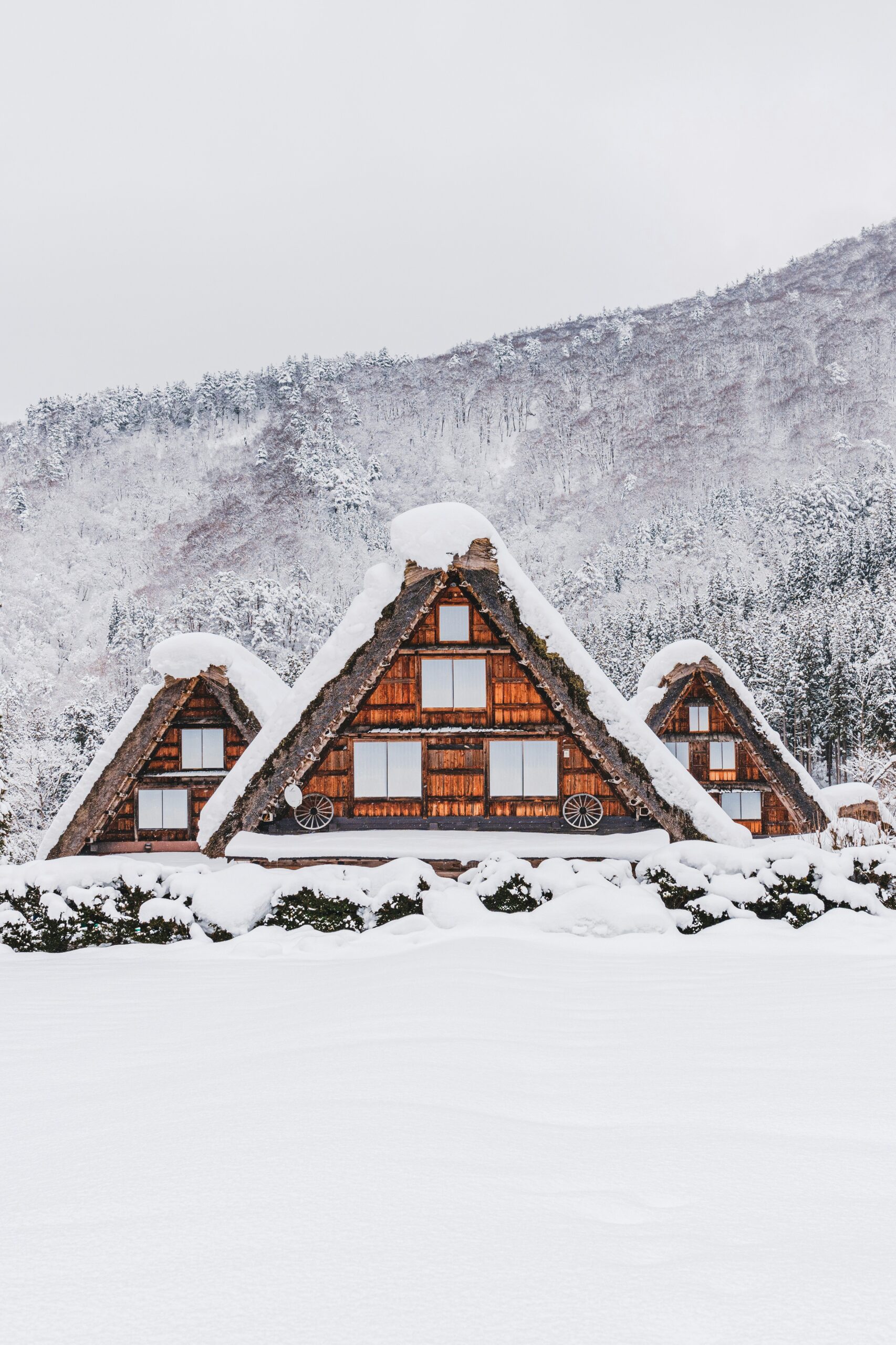After wrapping up a business meeting in wintery Tokyo, I found myself in the hotel lobby, absentmindedly watching a travel program on television. That’s when I first saw it—Shirakawa-go. I had never even heard the name before. Yet there it was on the screen: a village nestled in snow, its steep thatched roofs blanketed in white, like something out of a fairytale.

Located in the northwestern part of Gifu Prefecture, deep within the Hida region’s mountains, Shirakawa-go is home to numerous gassho-style houses, named for their steeply sloped roofs resembling hands pressed together in prayer. It’s a UNESCO World Heritage Site, the program said. Something about the place stirred a deep, inexplicable nostalgia within me. After days immersed in Tokyo’s electric pace, Shirakawa-go seemed to exist in an entirely different dimension—one where time moved slower, or maybe didn’t move at all.
Two days later, I was on a bus leaving Nagoya, heading into the mountains. The city gradually gave way to snow-covered forests, and tall cedar trees lined the road like silent guardians. The air turned clearer with every mile, and I felt my body slowly adjusting to a new rhythm—one stripped of urgency.
When I stepped off the bus in Shirakawa-go that afternoon, the village was bathed in a gentle, muted light. A hush blanketed the world. Snow drifted silently from the sky, muffling even my footsteps. Before me lay a village of triangular roofs, thick with snow, exhaling a warmth that seemed to pulse through the cold air.
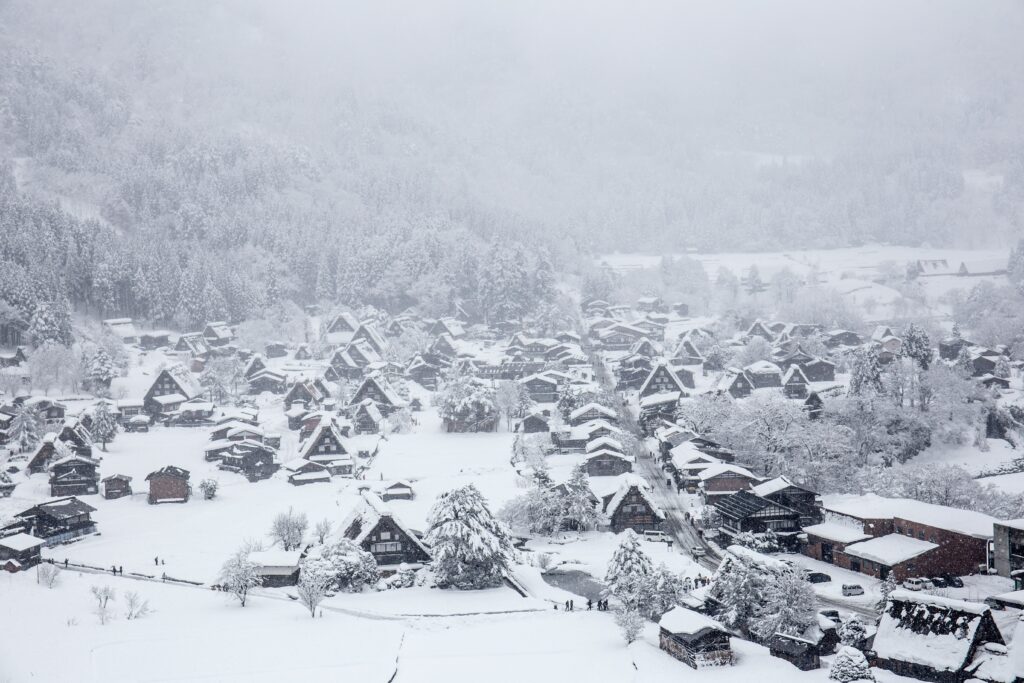
My first destination was the observation deck above the village. As I hiked up the snow-covered slope, the only sound was the rhythmic crunch of snow beneath my boots. From the top, I looked down at a landscape that seemed frozen in time. The gassho-style homes, lined up like pages in an ancient storybook, glowed in the soft orange hue of the setting sun.
Walking back through the village, I stopped in front of a small sweet shop. Its wooden façade was half-buried in snow, and a warm amber light flickered from the window. I stepped inside. The air smelled of smoke and sugar, and a fire crackled gently in an irori, the sunken hearth at the center of the room. I ordered zenzai—sweet red bean soup with roasted mochi floating on top. The first bite was a revelation: comforting, nostalgic, utterly grounding. The warmth filled me in a way I hadn’t realized I needed.
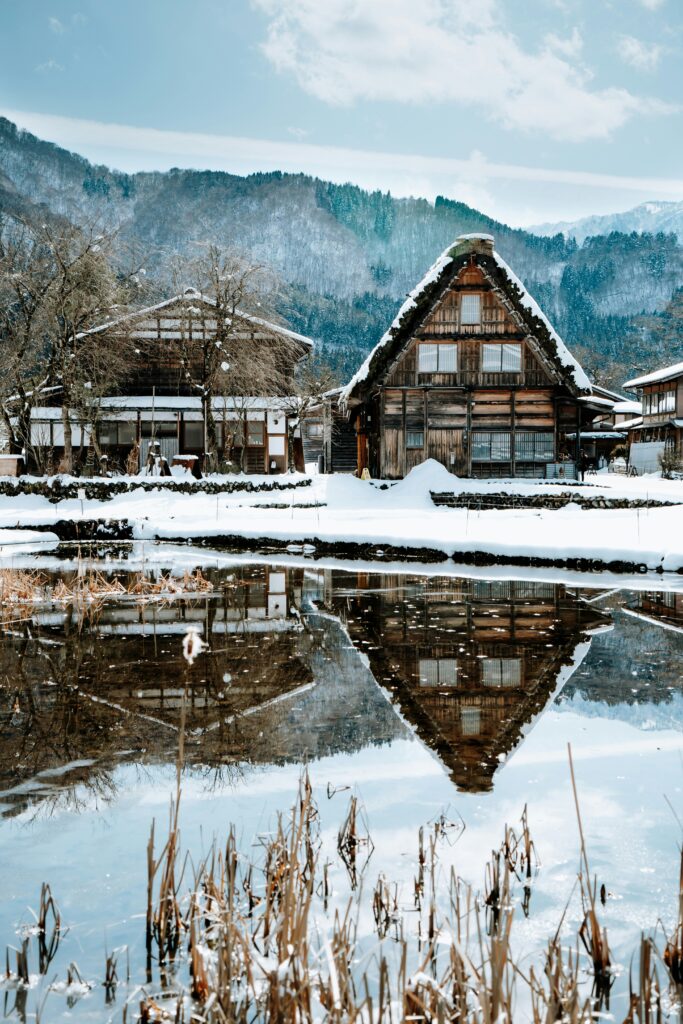
That evening, I stayed at a guesthouse converted from one of the village’s traditional gassho homes. The air was tinged with the scent of old wood, and shoji paper doors gently diffused the lamplight. Dinner was centered around a regional specialty: Hida beef grilled with miso on a magnolia leaf. The tender meat, the rich aroma of miso, the quiet crackle of charcoal—it was humble, yet indulgent. Everything about the meal spoke of balance: tradition and refinement, simplicity and abundance.
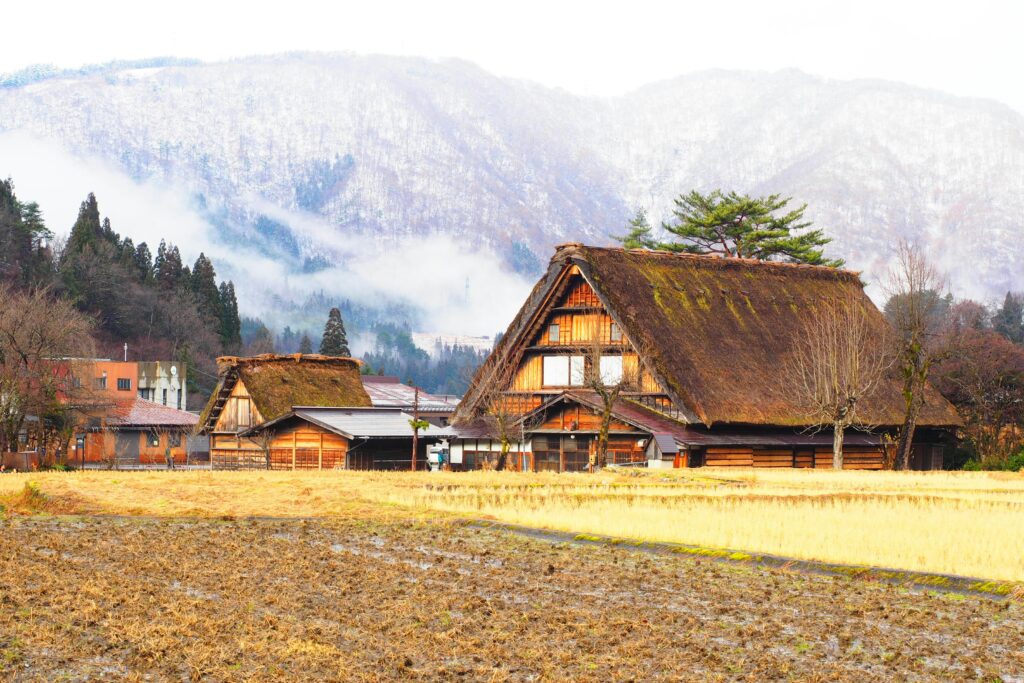
The next morning, as I wandered through the still-sleeping village, I stumbled upon a small woodworking shop. The handmade sign and wooden wind chimes swaying beneath the eaves caught my attention. Inside, an elderly man, perhaps in his seventies, was carving quietly at his bench. His hands, slightly gnarled from decades of labor, moved with unexpected grace. When I greeted him in English, he smiled and replied gently, “I can speak a little.”
“This house has been in my family since my grandfather’s time,” he explained. He had left the village once, lived briefly in cities like Tokyo and Osaka, but had eventually returned. “The snow made these roofs necessary,” he said, running a hand over the grain of the wood. “Living with nature—that’s the way of this village.”
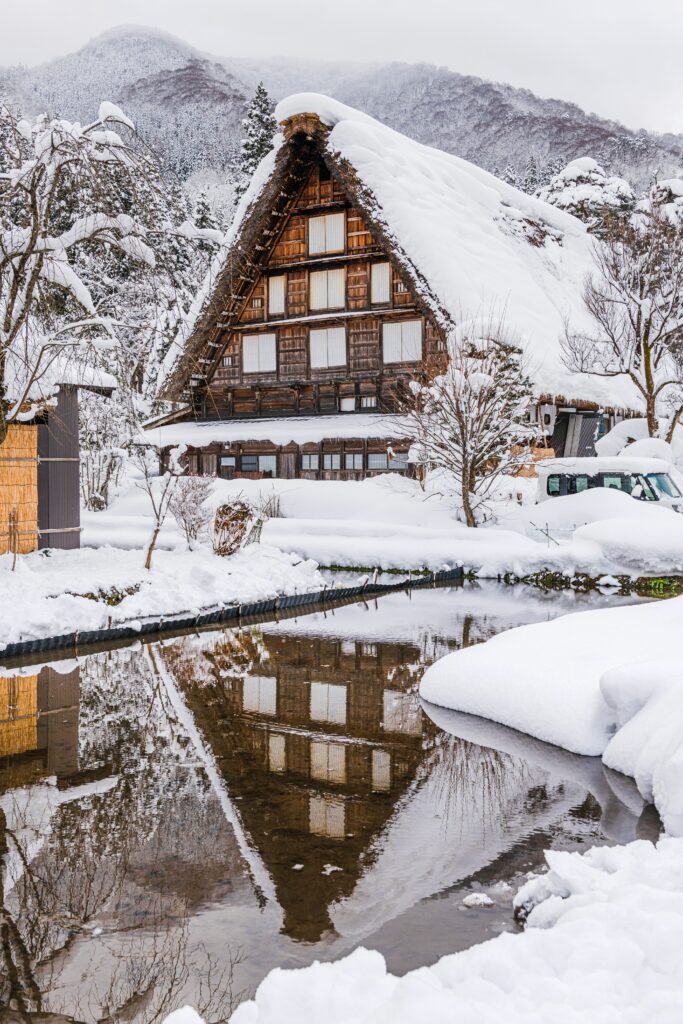
His words struck me. In the city, nature is often treated as a backdrop—something to be managed or avoided. But here, nature dictates the rhythm of life. There was a richness in that way of being that couldn’t be measured in efficiency or speed.
Before leaving the region, I visited three more places. First was Gokayama, about an hour from Shirakawa-go. It was even quieter, its gassho houses fewer and more secluded. It felt like walking through a period film set, but entirely real.
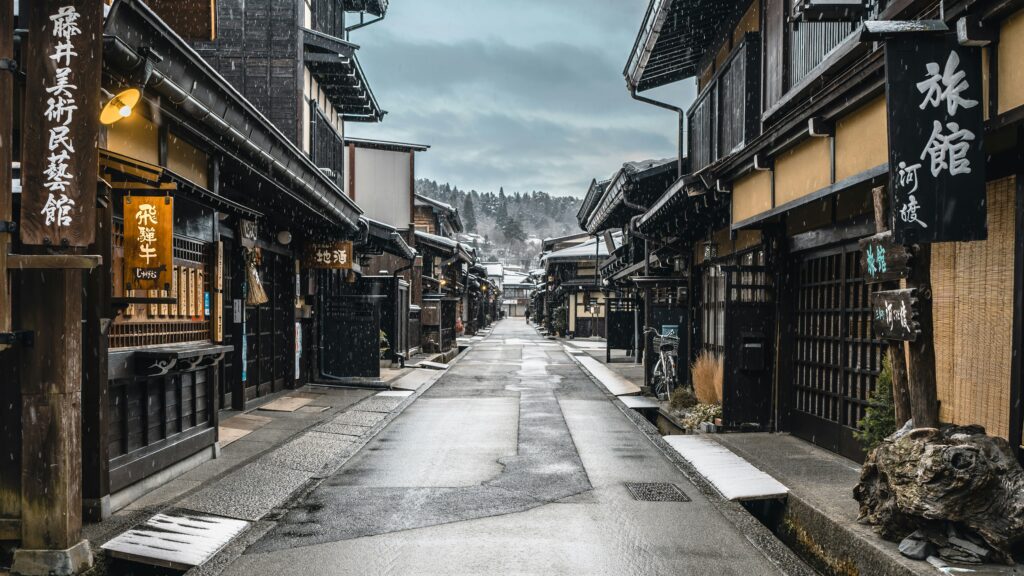
Next, I explored the old town of Takayama, where Edo-era merchant houses lined the stone-paved streets. I bought pickled vegetables at a miso shop that smelled of soy and woodsmoke. Finally, I visited Hida Great Limestone Cave, tucked into a snowy mountain. Inside, crystals sparkled like ice-bound jewels in the silence of the underground.
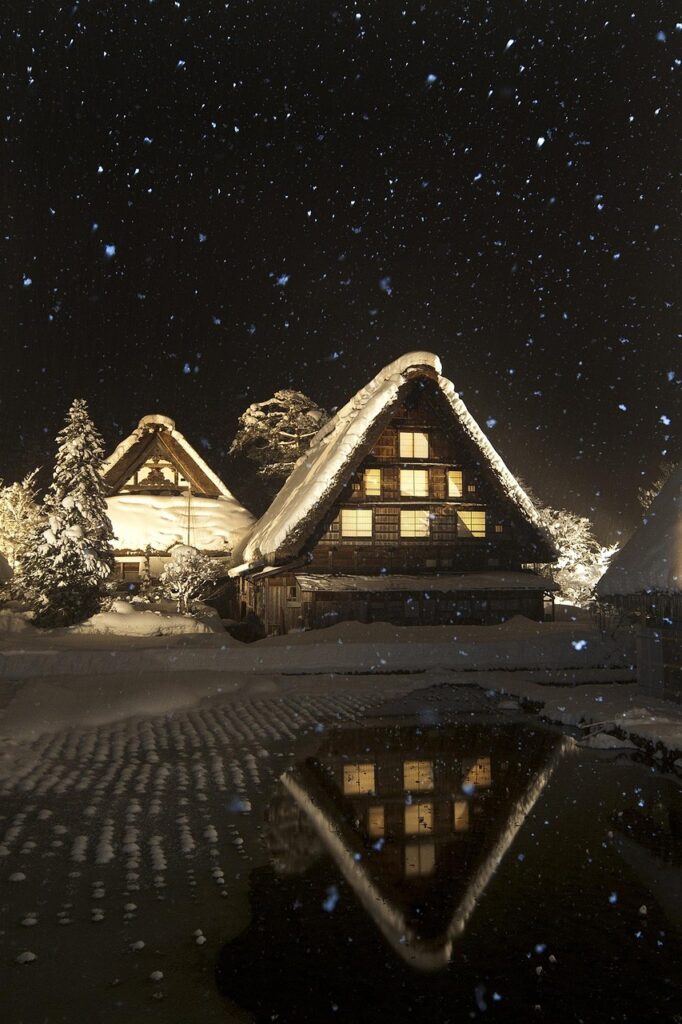
On the return journey, I glanced back at Shirakawa-go from the bus window, its rooftops barely visible under thick snow. I knew I was heading back to a life of meetings and deadlines. But something had shifted.
Shirakawa-go reminded me of things I’d forgotten: what it feels like to truly listen, to move in harmony with the seasons, to find richness in simplicity.

It wasn’t just a beautiful village—it was a place where the past and present quietly held hands. A place that gently asked me to pause, look around, and reconsider what “now” really means.
Something New Travel

